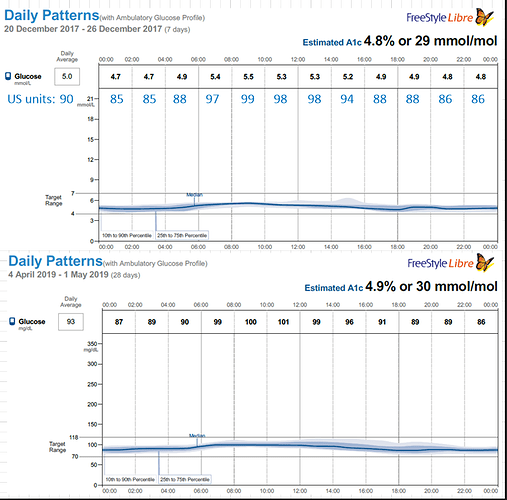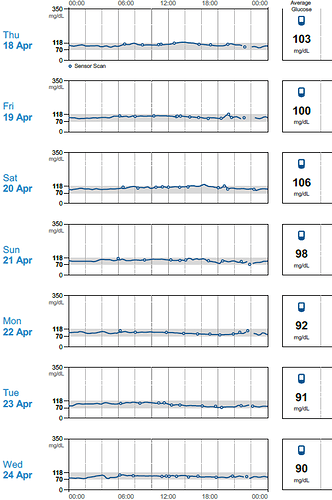I was thinking about this on the car ride into my office. If you look at my curves, they are remarkably flat relative to what they look like when I’m eating high carb, say at Thanksgiving. Let’s say my HbA1c goes up (and it’s accurate), there are still really no highs. If I have the same HbA1c on low carb with a lot of exercise as I do when I was high carb, the high carb would have to be worse, as there will be a ton of super high glucose spikes.
Also, the higher blood glucose when exercising is going to go somewhere – into muscles for replenishment of glycogen, at least. But if I’m not exercising much and eating high carb, that’s when the carbs don’t have anywhere to “go”.
I’d love to have a CGM now, because I’m testing a TKD (targeted keto diet), where I’m eating rice noodles after exercise. Only two days/week. I have stayed producing ketones with 100 g of carbs 2-3 hours after body weight training.
I also tested one day without exercise but with rice noodles (same amount). I was still able to stay producing ketones, but I was much hungrier.
My theory is that the body weight training provides somewhere for the glucose to go – muscles; whereas with no training, there is less of an opportunity for that.
I’d love to have a CGM to test blood sugar too (I theorize less blood sugar excursion after exercise and more after no exercise). Unfortunately, CGMs are so expensive, and doing this with pin prick monitors is – painful. It’s on my list of things to test, but I know my blood sugar goes up and down in 1 hour for high carb meals. That means at least every 15 minutes of pinpricks, and then I have to be concerned that the plus or minus 15% error in pinprick meters means the differences might be hidden in errors.


